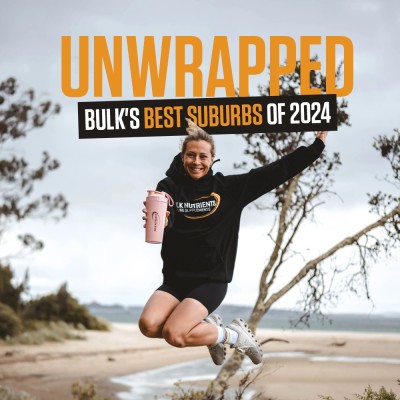Do You Have to Get Stronger to Get Bigger?

Is Strength Training the Best Way to Grow Muscle?
Firstly, the best way to gain muscle strength is to lift heavier weight (~4-8 reps). That is undisputed in the scientific literature.
But is this the best way to grow muscle?
How to Get Stronger, what's the Research Say?
Well, research shows that muscle growth is contingent on three factors:
- Mechanical tension
- Metabolic stress
- Muscle damage
And mechanical tension refers to a heavy weight being lifted. It's generating as much power as possible with heavyweight and good form.
And given it's one of the three principles, it's obviously something we really need to take note of. Working at 80% of your one-rep max (the amount of weight you can lift once) is of critical importance when mechanical tension needs to be reached.
This is because research finds that muscle activity is maxed out at 90% of maximal muscle output; the muscle stops getting a good workout at this point. So, it's recommended we lift at 80% of our one rep max for maximal strength.
So basically, we need to be adding more weight to the bar over time to take full advantage of progressive overload.
But is it the only way?
Do higher reps grow muscle at the same rate as lower reps?
We know that when you're just starting out at the gym -- high reps or low reps will bring about identical muscle growth. This study had two groups of subjects perform either 80% of their one-rep max, or 30%, on the leg extension. And they grew the same amount of muscle mass!
But those in the strength camp weren't convinced. "Let me know when they find TRAINED subjects, then I'll believe you!"
And then, in 2017, gym rats everywhere were chatting about a leading researcher's review paper into rep ranges and muscle growth. The researchers looked at studies that examined less than 60% of their one-rep max, and more than 60%. Their conclusion was:
"...muscle hypertrophy can be equally achieved across a spectrum of loading ranges."
Out of 21 studies selected in that review, 3 studies included resistance-trained subjects. Again, the strength camp laughed.
But that was then.

Modern Muscle Growth Research
Now we're in 2021, and the same researcher has just dropped another science bomb!
And the conclusion this time? Let us paraphrase:
The bulk of the data suggests that muscle growth can be achieved across a wide spectrum of reps -- anything greater than or equal to 30% of your 1 rep max.
But what about the subjects? Were they untrained or trained?
Well, again, many studies in this new review contained untrained subjects, which the authors openly admitted.
However, the lead researcher points out that when the studies into TRAINED subjects were considered, "the available evidence indicates that findings hold true in those with resistance training experience."
BAM!
They pointed to these studies:
They commented:
"These findings are independent of age and training status. Thus, as a matter of principle, there is no ideal 'hypertrophy zone.'"
But from a practical point, the authors point out that moderate loads provide a more efficient way of training. In other words, lifting heavier weight (6-8 reps) to muscle failure is easier than having to train until muscle failure with 25 reps. It's a lot faster!

For example, try doing bench press with a lighter weight until muscle failure -- it might take you 50 reps to achieve muscle failure when a heavier load will take 12 reps!
The authors point out that heavier loads can be harder than moderate loads on the joints, and therefore moderate loads are advisable. In other words, don't lift 4-6 reps day in day out, week in week out, you'll be sore, overtrained, and will be putting unnecessary pressure on your joints and body.
More research in the future should gather a large group of trained subjects and retest these findings, although we're not sure exactly that the outcome would be that different. We'll have to wait and see!
Wrapping Up: Maximising Strength and Muscle Growth
Training within our 80% rep max (4-6 reps) seems to be as efficient as training at 30%, as long as we're going to muscle failure and really testing ourselves. It means we should train in the 4-8 rep range and the 10-20 rep range. It ultimately means, based on the available data, that we don't need to get stronger to get bigger, and that training across all rep ranges is beneficial. Although more research may prove to be beneficial, that is the best advice based on the information we currently have.

Dayne Hudson
Like many, Dayne was once desperate to lose weight and get into shape. But everyone he asked, everything he read, lead to the same place... nowhere.
His journey started there - researching science journals and completing a Sports Nutrition Specialist qualification so he could make weight loss easier.
References:
- Schoenfeld BJ. The mechanisms of muscle hypertrophy and their application to resistance training. J Strength Cond Res. 2010 Oct;24(10):2857-72. doi: 10.1519/JSC.0b013e3181e840f3. PMID: 20847704.
- https://www.miotec.com.br/pdf/Pinto_et_al_2013_Med_Sport.pdf
- Mitchell CJ, Churchward-Venne TA, West DW, et al. Resistance exercise load does not determine training-mediated hypertrophic gains in young men. J Appl Physiol (1985). 2012;113(1):71-77. doi:10.1152/japplphysiol.00307.2012
- Schoenfeld BJ, Grgic J, Ogborn D, Krieger JW. Strength and Hypertrophy Adaptations Between Low- vs. High-Load Resistance Training: A Systematic Review and Meta-analysis. J Strength Cond Res. 2017 Dec;31(12):3508-3523. doi: 10.1519/JSC.0000000000002200. PMID: 28834797.
- Schoenfeld B.J., Peterson M.D., Ogborn D., Contreras B., Sonmez G.T. Effects of Low- Versus High-Load Resistance Training on Muscle Strength and Hypertrophy in Well-Trained Men. J. Strength Cond. Res. 2015;29:2954–2963. doi: 10.1519/JSC.0000000000000958.
- Morton R.W., Oikawa S.Y., Wavell C.G., Mazara N., McGlory C., Quadrilatero J., Baechler B.L., Baker S.K., Phillips S.M. Neither load nor systemic hormones determine resistance training-mediated hypertrophy or strength gains in resistance-trained young men. J. Appl. Physiol. 2016;121:129–138. doi: 10.1152/japplphysiol.00154.2016.




























